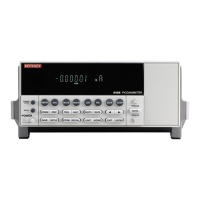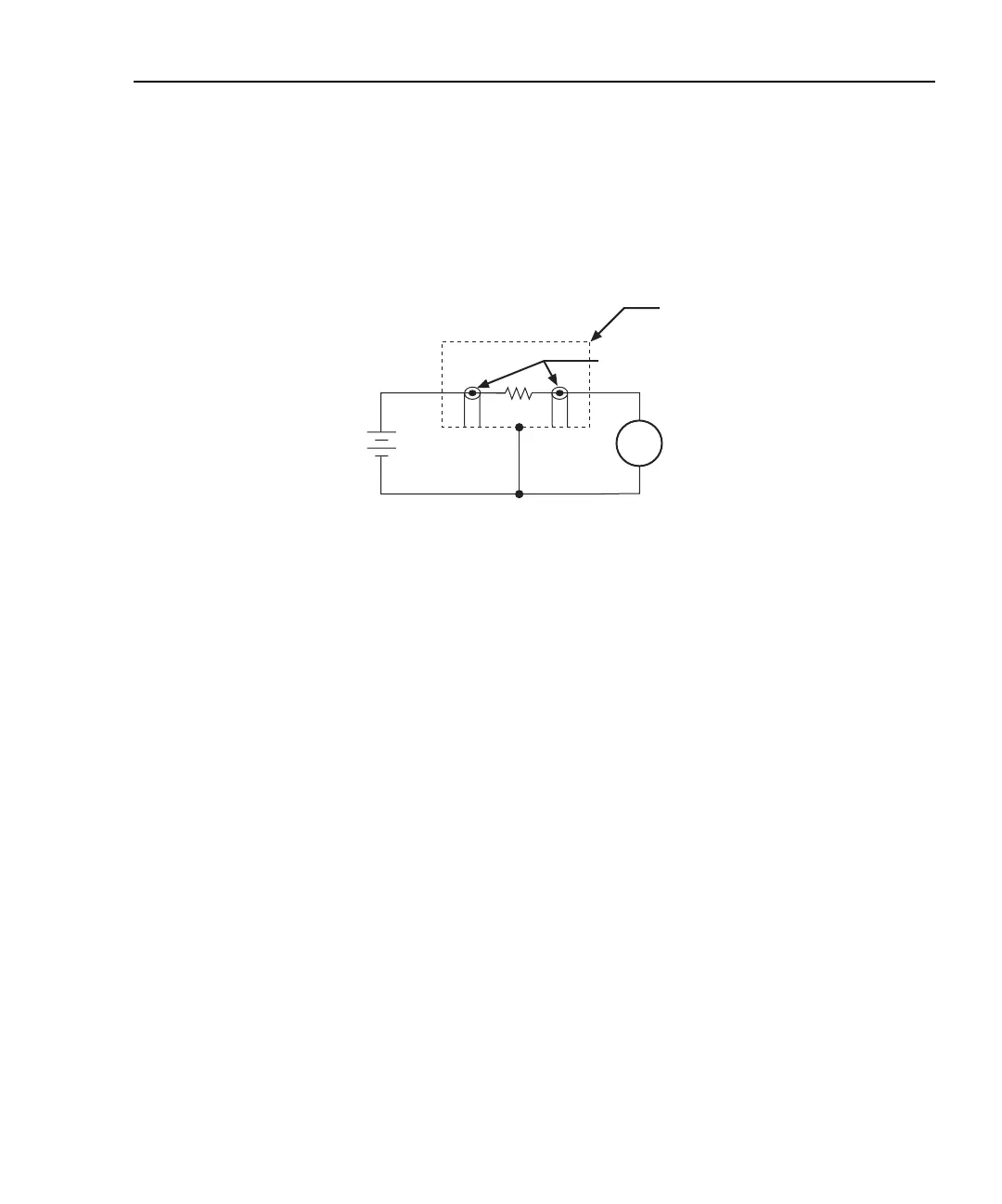Model 6485 Picoammeter Instruction Manual Applications Guide I-3
voltage difference is equal to the voltage burden of the picoammeter. Since the top and the
bottom of the insulator are at nearly the same potential, no significant current will flow
through it, and nearly all the current from the device under test will flow through the
picoammeter as well.
Figure I-1
Guarding to reduce leakage currents
Input bias current
An ideal picoammeter would read 0A with an open input. In practice, however, ammeters
do have some current that flows when the input is open. This current is known as the input
bias (offset) current and may be large enough to corrupt low current measurements. The
input bias current for Model 6485 is included in the offset portion of the accuracy specifi-
cation.
Voltage burden
The input resistance of the picoammeter causes a small voltage drop across the input ter-
minals. This voltage is known as the voltage burden. If the voltage burden is large in rela-
tion to the voltage of the measured circuit, then significant measurement errors will occur.
Refer to Figure I-2 to see how voltage burden affects current measurements. Assume V
S
is
5mV and R
S
is 5kΩ to configure a 1µA current source (5mV/5kΩ = 1µA). An ideal
picoammeter with zero voltage burden would allow 1µA to flow and measure it accurately.
In practice however, every picoammeter has a voltage burden. If the voltage burden (V
B
) is
1mV, the current that flows will be:
Programmable
V-Source
+
-
6485
Picoammeter
Metal
Shield
Measured
Current
HI
LO
HI
LO
Equivalent Circuit
DUT
Test Fixture
Insulators
A
I
M
V
S
V
B
–
R
S
--------------------
5mV 1mV–
5kΩ
------------------------------- 0.8µA== =

